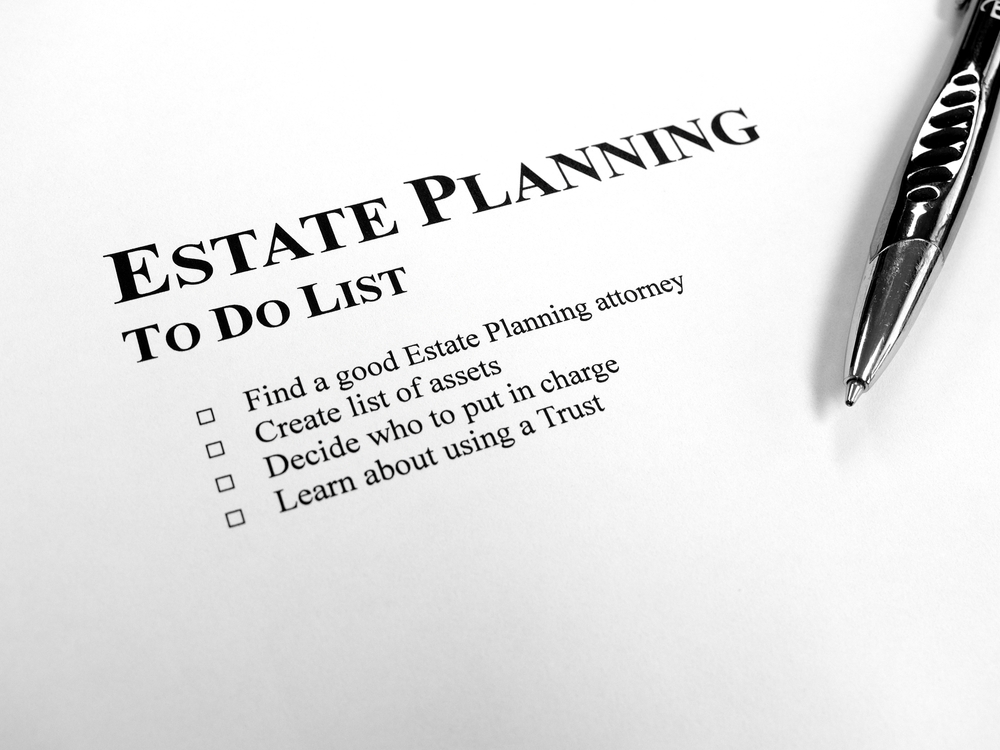Owning a residence which you leave to direct descendants
IT’S BECOMING INCREASINGLY IMPORTANT FOR MORE PEOPLE TO CONSIDER SUCCESSION PLANNING AND INTERGENERATIONAL WEALTH TRANSFER AS PART OF THEIR ESTATE PRESERVATION PLANNING.
These are some questions you should answer as part of your intergenerational wealth transfer plans: When did wealth enter my life and how do I think this timing influences my values and family relationships?
What impact does affluence have on my life and the lives of my next generation? What was the key to my success in creating wealth and how might telling this story to my future generation be helpful?
What is my biggest concern in raising my children or grandchildren with affluence?
What conversations (if any) did I have with my parents about money and wealth growing up?
How did my parents prepare me to receive wealth?
What lessons did I learn from my parents about money and finance that I would like to pass on to my heirs?
What family values would I like to pass down to the next generation and how do I plan on communicating this family legacy?
What concerns do I have about my adult children when it comes to inheriting and managing the family wealth?
How can I help prepare my beneficiaries to receive wealth and carry on our family legacy?
ADVANCED PREPARATIONS
Despite the vast amount of wealth likely to be passed down between generations, those in line for inheritance could end up being over-reliant on their expected windfall.
Thee key will be to ensure younger generations are able to get involved and understand how to handle the wealth they will be inheriting, as well as being able to make good decisions about the wealth that they generate themselves.
You need to consider who will receive what and whether you want to pass your wealth during your lifetime or on death. These decisions then need to be balanced by the tax implications of any proposed planning. This is especially important at what can be a highly stressful time.
By making advanced preparations, the burden of #ling complicated Inheritance Tax returns can be reduced.
The introduction of the ‘residence nil-rate band’ (RNRB) has made it easier for some individuals to pass on the family home. !e rise in property prices throughout the UK means that even those with modest assets may exceed the £325,000 ‘nil-rate band’ (NRB) for Inheritance Tax. On 6 April 2017, the RNRB band came into effect. It provides an additional nil rate band where an individual dies after 6 April 2017, owning a residence which they leave to direct descendants. During the 2022/23 tax year, the maximum RNRB available is currently £175,000.
Just like the standard NRB, any unused RNRB on the #rst death of a married couple or registered civil partners has the potential to be transferable even if the #rst death occurred before 6 April 2017. However, the RNRB does come with conditions and so may not be available or available in full to everyone.
TAXABLE ESTATE
The RNRB is set against the taxable value of the deceased’s estate – not just the value of the property. Unlike the existing NRB, it doesn’t apply to transfers made during an individual’s lifetime. For married couples and registered civil partners, any unused RNRB can be claimed by the surviving spouse’s or registered civil partner’s personal representatives to provide a reduction against their taxable estate.
Where an estate is valued at more than £2 million, the RNRB will be progressively reduced by £1 for every £2 that the value of the estate exceeds the threshold. Special provisions apply where an individual has downsized to a lower value property or no longer owns a home when they die.
LIFETIME GIFTS
In determining whether the £2 million threshold is breached, it is necessary to ignore reliefs and exemptions. !is means that business relief and agricultural relief are ignored when determining the value of the estate for the RNRB even though they are taken into account to calculate the liability to Inheritance Tax. As the £2 million is based on the value of the assets owned at the time of death, it does not include any lifetime gifts made by the deceased, even if they were made within seven years of death and are included in the Inheritance Tax calculation. !e amount of RNRB available to be set against an estate will be the lower of the value of the home, or share, that’s inherited by direct descendants and the maximum RNRB available when the individual died.
DECEASED SPOUSE
Where the value of the property is lower than the maximum RNRB, the unused allowance can’t be offset against other assets in the estate but can be transferred to a deceased spouse or registered civil partner’s estate when they die, having le$ a residence to their direct descendants. A surviving spouse or registered civil partner’s personal representatives may claim any unused RNRB available from the estate of the first spouse or registered civil partner to die.
RESIDENTIAL INTEREST
This is subject to the second death occurring on or after 6 April 2017 and the survivor passing a residence they own to their direct descendants. !is can be any home they’ve lived in – there’s no requirement for them to have owned or inherited it from their late spouse or registered civil partner. In order to pass on a qualifying residential interest and use the Inheritance Tax RNRB, the property needs to be ‘closely inherited’. Thiss means that the property must be passed to direct descendants.
SPECIAL GUARDIAN
For these purposes, direct descendants are lineal descendants of the deceased – children, grandchildren and any remoter descendants together with their spouses or registered civil partners, including their widow, widower or surviving registered civil partner. Also included are a step, adopted or fostered child of the deceased, or a child to which the deceased was appointed as a guardian or a special guardian when the child was under 18. Direct descendant doesn’t include nephews, nieces, siblings and other relatives. If an individual, a married couple or registered civil partners do not have any direct descendants that qualify, they will be unable to use the RNRB.
DEEMED RESIDENCE
Thee facility to claim unused RNRB applies regardless of when the #rst death occurred – if this was before it was introduced, then 100% of a deemed RNRB of £175,000 can be claimed, unless the value of the #rst spouse or registered civil partner’s estate exceeded £2 million, and tapering of the RNRB applies. !e unused RNRB is represented as a percentage of the maximum RNRB that was available on #rst death – meaning the amount available against the survivor’s estate will benefit from subsequent increases in the RNRB.
DEED OF VARIATION
Thee transferable amount is capped at 100% – claims for unused RNRB from more than one spouse or registered civil partner are possible but in total can’t be more than 100% of the maximum available amount. Under the RNRB provisions, direct descendants inherit a home that’s le$ to them which becomes part of their estate. This could be under the provisions of the deceased’s Will, under the rules of intestacy or by some other legal means as a result of the person’s death – for example, under a deed of variation.
MAIN RESIDENCE
The RNRB applies to a property that’s included in the deceased’s estate and one in which they have lived. It needn’t be their main residence, and no minimum occupation period applies. If an individual has owned more than one home, their personal representatives can elect which one should qualify for RNRB. !e open market value of the property will be used less any liabilities secured against it, such as a mortgage. Where only a share of the home is le$ to direct descendants, the value and RNRB is apportioned.
COMPLEX AREA
A home may already be held in trust when an individual dies or it may be transferred into Trust upon their death. Whether the RNRB will be available in these circumstances will depend on the type of Trust, as this will determine whether the home is included in the deceased’s estate, and also whether direct descendants are treated as inheriting the property. This is a complex area, and HM Revenue & Customs provides only general guidance, with a recommendation that a solicitor or trust specialist should be consulted to discuss whether the RNRB applies.
DOWNSIZING ADDITION
Estates that don’t qualify for the full amount of RNRB may be entitled to an additional amount of RNRB – a downsizing addition if the following conditions apply: the deceased disposed of a former home and either downsized to a less valuable home or ceased to own a home on or after 8 July 2015; the former home would have qualified for the RNRB if it had been held until death; and at least some of the estate is inherited by direct descendants. !e downsizing addition will generally represent the amount of ‘lost’ RNRB that could have applied if the individual had died when they owned the more valuable property. However, it won’t apply where the value of the replacement home they own when they die is worth more than the maximum available RNRB. It’s also limited by the value of other assets le$ to direct descendants.
PLANNING TECHNIQUES
Different planning techniques are available to address a potential Inheritance Tax liability, and these can be incorporated into the financial arrangements of any individual whose estate is likely to exceed the threshold.
INHERITANCE TAX EXEMPTIONS CAN BE ACHIEVED BY MEANS OF MAKING CERTAIN EXEMPT TRANSFERS, WHICH APPLY IN A NUMBER OF CASES INCLUDING WEDDING GIFTS, LIFE ASSURANCE PREMIUMS, GIFTS TO YOUR FAMILY AND CHARITABLE GIVING.





